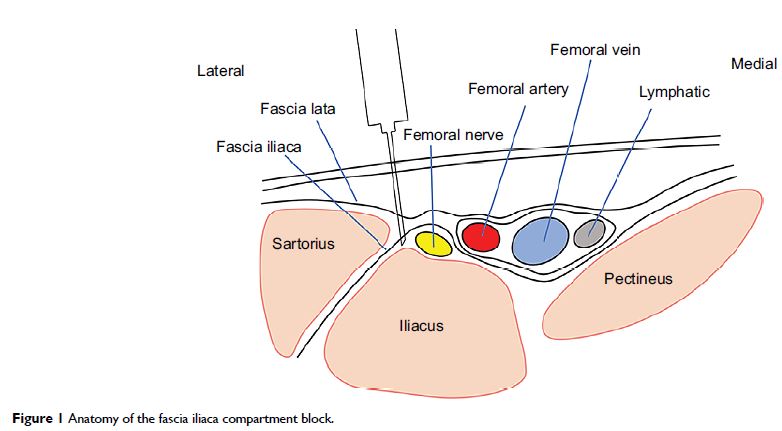108384
论文已发表
注册即可获取德孚的最新动态
IF 收录期刊
- 3.4 Breast Cancer (Dove Med Press)
- 3.2 Clin Epidemiol
- 2.6 Cancer Manag Res
- 2.9 Infect Drug Resist
- 3.7 Clin Interv Aging
- 5.1 Drug Des Dev Ther
- 3.1 Int J Chronic Obstr
- 6.6 Int J Nanomed
- 2.6 Int J Women's Health
- 2.9 Neuropsych Dis Treat
- 2.8 OncoTargets Ther
- 2.0 Patient Prefer Adher
- 2.2 Ther Clin Risk Manag
- 2.5 J Pain Res
- 3.0 Diabet Metab Synd Ob
- 3.2 Psychol Res Behav Ma
- 3.4 Nat Sci Sleep
- 1.8 Pharmgenomics Pers Med
- 2.0 Risk Manag Healthc Policy
- 4.1 J Inflamm Res
- 2.0 Int J Gen Med
- 3.4 J Hepatocell Carcinoma
- 3.0 J Asthma Allergy
- 2.2 Clin Cosmet Investig Dermatol
- 2.4 J Multidiscip Healthc

已发表论文
髂骨筋膜室阻滞与下肢手术后无阻碍疼痛控制:一项荟萃分析
Authors Yang L, Li M, Chen C, Shen J, Bu X
Received 21 August 2017
Accepted for publication 15 November 2017
Published 14 December 2017 Volume 2017:10 Pages 2833—2841
DOI https://doi.org/10.2147/JPR.S149647
Checked for plagiarism Yes
Review by Single-blind
Peer reviewers approved by Dr Colin Mak
Peer reviewer comments 2
Editor who approved publication: Dr E. Alfonso Romero-Sandoval
Background: The analgesic effect
of fascia iliaca compartment block (FICB) versus no block (NB) after lower limb
surgery (LLS) is still controversial, so we performed this meta-analysis.
Materials and methods: By searching the PubMed, Embase and the Cochrane Library (last update by July 20, 2017), randomized controlled trials comparing the analgesic effect of FICB versus NB in patients receiving LLS were identified. The primary outcome was the pain scores at 4, 12, and 24 h after LLS. The dosage of morphine at 24 h was also collected. The side effect of anesthesia was assessed according to the occurrence rate of postoperative nausea and vomiting.
Results: Data from 7 clinical trials that included 508 patients were summarized. The results showed that patients receiving FICB had lower pain scores at 4 h (mean difference [MD]=−1.17; 95% CI=−2.30 to −0.05; P =0.041), 12 h (MD=−0.41; 95% CI=−0.76 to −0.05; P =0.026) and 24 h (MD=−0.96; 95% CI=−1.77 to −0.15; P =0.020) after LLS. Besides, FICB could reduce the dosage of morphine at 24 h (MD=−2.06; 95% CI=−3.82 to −0.30; P =0.022) and the incidence of postoperative nausea and vomiting (relative risk rate=0.44, 95% CI=0.24–0.80, P =0.008).
Conclusion: Compared with NB, FICB is an effective and safe method for alleviating the pain after LLS. More high-quality randomized controlled trials are needed to confirm this finding.
Keywords: fascia iliaca compartment block, lower limb surgery, meta-analysis, RCTs
Materials and methods: By searching the PubMed, Embase and the Cochrane Library (last update by July 20, 2017), randomized controlled trials comparing the analgesic effect of FICB versus NB in patients receiving LLS were identified. The primary outcome was the pain scores at 4, 12, and 24 h after LLS. The dosage of morphine at 24 h was also collected. The side effect of anesthesia was assessed according to the occurrence rate of postoperative nausea and vomiting.
Results: Data from 7 clinical trials that included 508 patients were summarized. The results showed that patients receiving FICB had lower pain scores at 4 h (mean difference [MD]=−1.17; 95% CI=−2.30 to −0.05; P =0.041), 12 h (MD=−0.41; 95% CI=−0.76 to −0.05; P =0.026) and 24 h (MD=−0.96; 95% CI=−1.77 to −0.15; P =0.020) after LLS. Besides, FICB could reduce the dosage of morphine at 24 h (MD=−2.06; 95% CI=−3.82 to −0.30; P =0.022) and the incidence of postoperative nausea and vomiting (relative risk rate=0.44, 95% CI=0.24–0.80, P =0.008).
Conclusion: Compared with NB, FICB is an effective and safe method for alleviating the pain after LLS. More high-quality randomized controlled trials are needed to confirm this finding.
Keywords: fascia iliaca compartment block, lower limb surgery, meta-analysis, RCTs
